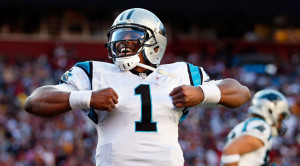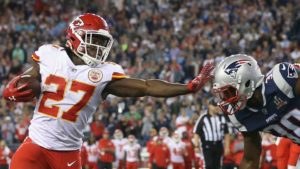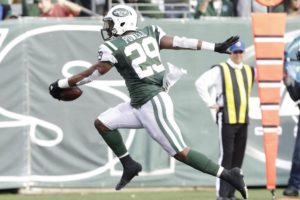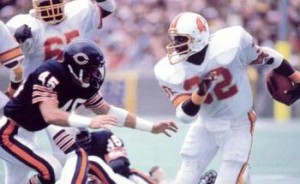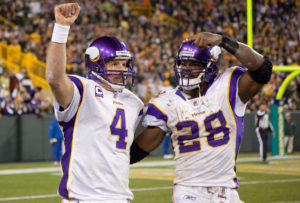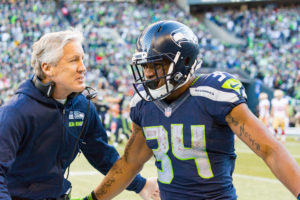Let’s travel back in time to December 7th, 2013.
Adrian Peterson was 28 years and 255 days old, and had just rushed for 211 yards in a win against the Bears. Peterson, who had rushed for 2,097 yards in 2012, was looking to repeat as rushing champion: he had just cracked the 1,200-yard rushing mark in 2013, while no other running back had yet hit 1,100 yards.
Frank Gore was 30 years and 201 days old, and had just had another mediocre week. Against the Rams, he rushed 15 times for only 42 yards, his second poor game in a row and his sixth straight game with fewer than 100 rushing yards. He ranked 10th in the NFL in rushing.
Gore, by virtue of being two years older and having entered the NFL two years earlier than Peterson, had just finished his 128th game; Peterson had just completed his 101st. But despite the two-year head start, Peterson had edged in front of Gore on the career rushing list. In fact, his stellar effort against Chicago extended Peterson’s career edge to 397 yards: the Vikings star had 10,057 rushing yards, while the 49ers star had 9,660.
Peterson, at 28 years old, had a career average of 100 rushing yards per game; Gore, at 30, was at 75 rushing yards per game for his career. At the time, it would have been laughable to wonder who would finish with more career rushing yards: Peterson was better, younger, and was already in the lead!
But the next week, Peterson injured his foot against the Ravens, and he dealt with foot and groin injuries for the rest of 2013. In 2014, he missed nearly the entire season due to a suspension after being indicted on charges of reckless or negligent injury to his son. In 2015, he had another great season and led the NFL in rushing, but in 2016, a knee injury limited him to just 72 yards in three games, his second season in three years with under 100 rushing yards. And this year? He’s now with the Saints, but has only 27 carries for 81 yards through four games: he ranks 3rd on New Orleans in rushing and 8th in yards from scrimmage. Since December 7, 2013, he’s rushed for only 1,771 yards.
As for Gore? Well, he’s just kept chugging along, rushing for about 65 yards seemingly every week. He’s basically doubled Peterson since then, with 3,486 yards since that poor game against the Rams in his age 30 season. So despite being older, a less effective player, and behind in the standings, Gore has now jumped out to a 1,428 yard career edge on Peterson. That’s the largest his lead has been since 2008, when Peterson was in his second year with the Vikings.
The best way to understand Gore and Peterson’s career, though, is with a visual. In the graph below, I’ve plotted Gore’s (in Niners red) and Peterson’s (in Vikings purple) career rushing yards through each week of the NFL since 2005. Their totals are marked against the Left Y-Axis. Gore had a lead of over 2,000 yards by the time Peterson entered the league, but you can see that Peterson’s line — once it starts — is much steeper. Eventually, he overtook Gore, and that lead hit its peak in early December 2013. Since then, he’s flattened out other than his strong 2015 season, and while Peterson is just shy of 12,000 rushing yards, Gore has already topped 13,000.
Plotted against the Right Y-Axis is the amount of Gore’s lead: some weeks he would beat Peterson, of course, but in general, that lead kept declining until that Peterson injury in 2013 and his suspension in 2013. His lead went back down again during 2015, but Gore’s advantage is again on the rise: [continue reading…]


